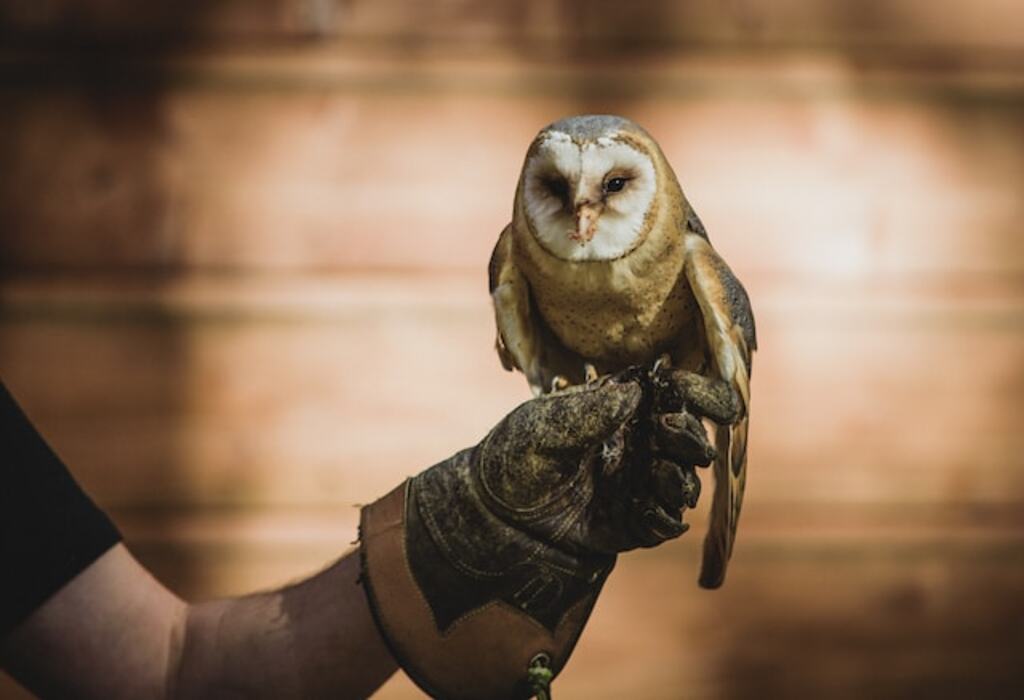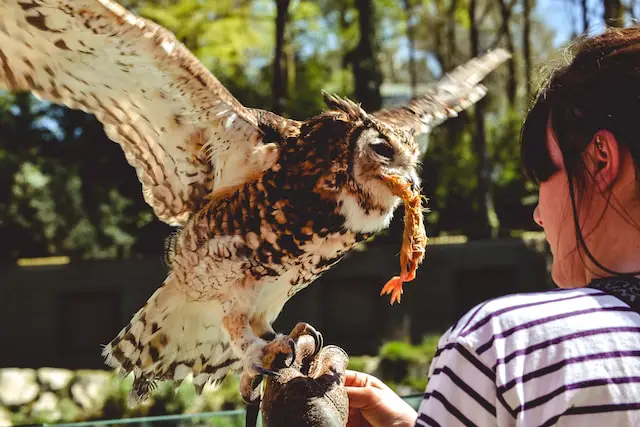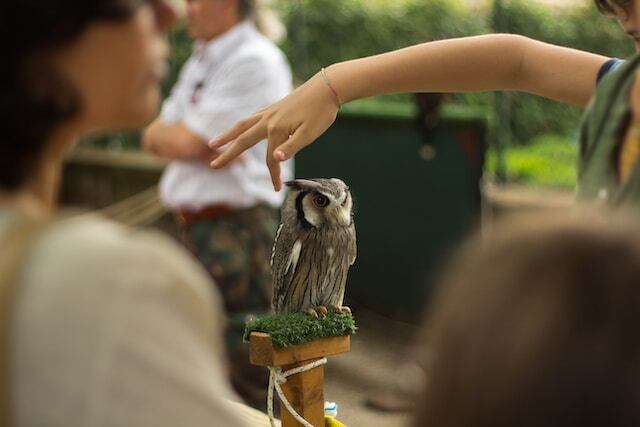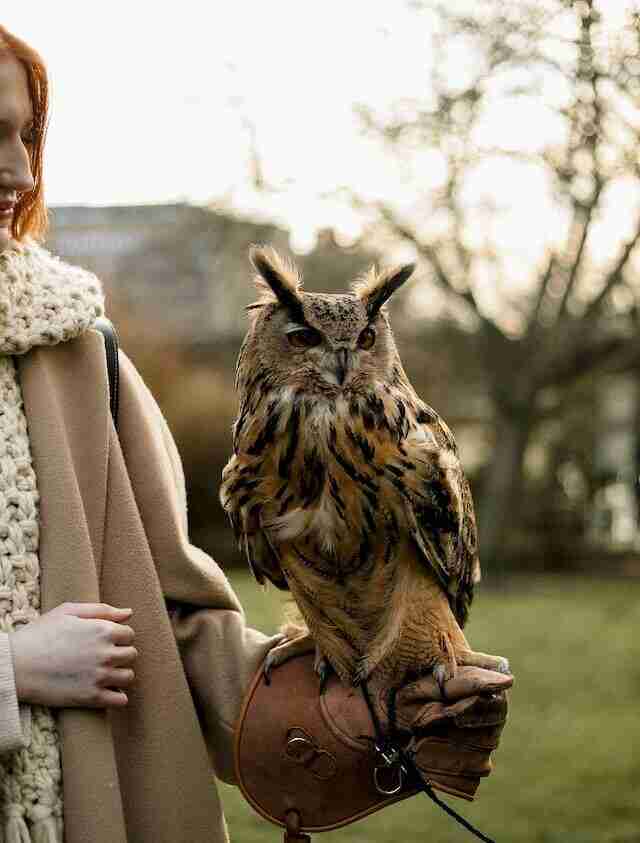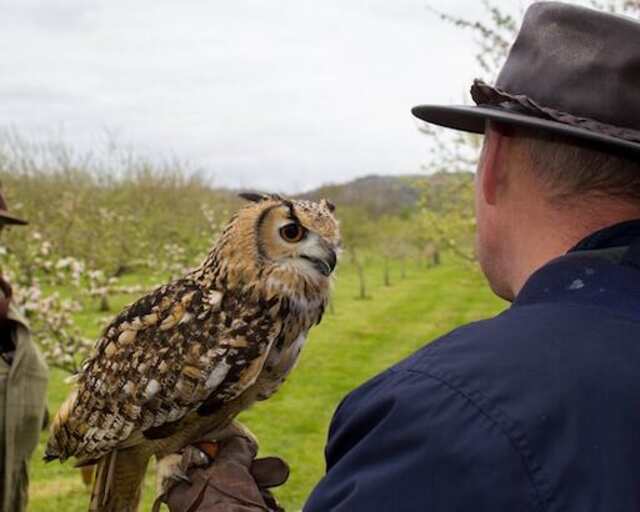Owls captivate us with their majestic appearance and mysterious nature. They often seem like the perfect exotic pet in photos, but the reality is quite different. While they may appear cute and cuddly, owls are wild animals that require specialized care and expertise, making them unsuitable for the average pet owner.
Before you let go of your dream of owning an owl, let’s dive deeper into why owls aren’t ideal pets and what you need to know if you’re still considering adopting one. Keep reading to uncover the truths about having an owl as a pet!
Table of Contents
Overview of the Topic
Owls have always fascinated humans with their large eyes, silent flight, and mysterious nature. They are birds of prey that hunt at night and are revered in many cultures around the world.
In recent years, owls have gained popularity as pets due to their unique appearance and perceived intelligence. However, owning an owl as a pet is not an easy task.
Not only do they require a specialized diet and living conditions, but they also pose a significant danger to people who are not experienced in handling them.
This article will explore the pros and cons of owning an owl as a pet, the types of owls that can be kept as pets, how to care for them, and legal considerations for owning one.
Brief History of Owls as Pets
Owls have been kept as pets for centuries by various cultures around the world. In Ancient Greece, owls were associated with wisdom and were often kept as companions by philosophers such as Athena.
During medieval times in Europe, falconers used owls to hunt small game such as rabbits. In the 19th century, owls became more popular in aristocratic circles in Europe and were often kept in aviaries or released during hunting parties.
However, it wasn’t until the 20th century that owning an owl as a pet became more widespread. Today, many people keep owls as pets due to their unique appearance and perceived intelligence.
Thesis Statement
While owning an owl may seem like a dream come true for some people, it is important to understand the responsibilities that come with keeping one. From legal restrictions to specialized care requirements, there are many factors to consider before bringing an owl into your home.
This article aims to provide readers with a comprehensive guide on whether or not it is feasible to keep an owl as a pet.
Owls as pets: Pros and Cons
Owning an owl as a pet is a unique experience that can be very rewarding, but it is not for everyone. Before deciding to bring an owl into your home, it is essential to consider both the advantages and disadvantages of owning one.
Advantages of having an owl as a pet
They are fascinating creatures: Owls are mesmerizing birds with their big eyes, sharp talons, and silent flight. They have long been associated with wisdom and knowledge, making them popular symbols in literature, art, and mythology.
Owning an owl provides the opportunity to observe these magnificent creatures up close and personal. They are low maintenance: Owls are solitary animals that require minimal attention from their owners.
Unlike dogs or cats that require daily exercise and playtime, owls spend most of their time perched on a branch or in a nesting box. They do not need grooming or bathing like other pets, either.
They can be trained to do tricks: With patience and dedication, owls can learn tricks such as flying to your arm on command or fetching small objects.
Training methods for owls vary depending on the breed; some owls respond well to positive reinforcement training, while others benefit from more structured training methods.
Disadvantages of having an owl as a pet
Legal restrictions on owning owls: The United States government regulates the ownership of wild animals such as owls under the Endangered Species Act (ESA). Some states also have their regulations regarding owning exotic pets. It’s crucial to research state laws before considering ownership.
Owls require specialized care and attention: Owning an owl requires a significant commitment of time, money, and effort. Owls require a large enclosure, specialized diet, and regular veterinary checkups.
They also need environmental enrichment to prevent boredom and ensure their mental wellbeing. Owls can be dangerous: Owls are predators that have sharp talons and powerful beaks; they have the potential to cause serious injury to their owners or other pets in the household.
It’s essential to handle owls with care and respect their boundaries. Owning an owl can be a unique and rewarding experience for those willing to put in the required time and effort.
However, it is crucial to consider both the pros and cons before making a decision. Owls require specialized care that is not suitable for everyone, so it’s important first to determine if you have the resources necessary before considering ownership.
Types of Owls that Can Be Kept As Pets
Owls are a unique type of pet that requires specialized care and attention. Before considering owning an owl, it is essential to know which types of owls are suitable for captivity, as not all species can be kept as pets. Here we will discuss the most popular breeds of pet owls.
Barn Owl
Barn Owls are one of the most popular breeds among pet owners. They have a heart-shaped face and a distinct white and beige plumage with black spots. Barn Owls prefer to live near open fields or grasslands where they can find an abundance of prey, such as mice, rats, and small mammals.
They also have a unique behavior pattern where they make little noise while flying to catch their prey. Barn Owls are relatively low maintenance compared to other breeds but still require proper nutrition, housing and medical care.
Snowy Owl
The Snowy Owl is known for its majestic appearance with white feathers that blend into its snowy surroundings, making it difficult for predators to spot them in the wild. These large birds need plenty of space to move around due to their wingspan, which can reach up to five feet in length.
They require specialized housing with high ceilings that mimic their natural habitat in the Arctic tundra. In captivity, Snowy Owls should be fed a diet consisting mainly of rodents such as mice or rats.
Screech Owl
The Screech Owl is one of the smallest breeds and has distinctive ear tufts on top of their head making them easily recognizable from other owl species. There are two different types: Eastern Screech Owl (red phase) and Western Screech owl (gray phase).
Both subspecies have brownish-gray coloration, which helps them blend into tree bark where they roost. Unlike other species, Screech Owls are active during the day and at night, making them an excellent choice for those who want to observe their pet owl’s behavior throughout the day.
Eagle Owl
Eagle Owls are one of the largest breeds of owls and have impressive wingspans that can reach up to six feet in length. They have a distinctive orange beak and piercing yellow eyes which make them stand out from other breeds.
Eagle Owls require specialized care due to their size as well as a lot of space to move around. They also require a high protein diet consisting mainly of whole prey such as rabbits or chickens.
Knowing which types of owls are suitable for captivity is essential before considering owning one as a pet. Each breed has its unique characteristics and behavior patterns that should be taken into account when choosing the right breed for you.
How to Care for Pet Owls?
Housing Requirements for Pet Owls
Owls are not your typical domesticated animal, so they need a special place to live in. A spacious and well-ventilated enclosure will provide the perfect environment for your pet owl.
The enclosure should be large enough for the owl to fly around and exercise, but not too big as it might become difficult to keep it clean. The best material for flooring is concrete because it is easy to clean and does not retain moisture, which can lead to bacterial growth.
It is important also to provide perches or branches that are of varying heights and widths, since owls like to perch at different levels.
Additionally, you must ensure that the enclosure has a temperature range of 50 °F – 70 °F, as anything hotter or colder can cause stress on your pet owl.
Dietary Needs and Feeding Schedule
The diet of an owl in captivity should include whole prey items such as mice, rats, quails, chickens or rabbits. As these animals have nutritional requirements similar to those of their natural preys in the wild.
The food should be fresh, since stale meat may contain bacteria that can harm your pet owl. The feeding schedule varies depending on the species of the owl you’re keeping.
As some require more frequent feeding than others do, but generally speaking an adult owl needs food once a day with occasional fasts depending on its health status.
Healthcare and Veterinary Care for Pet Owls
Owning a pet owl requires veterinary care just like any other domesticated animal. It is important that you find a veterinarian who specializes in treating birds of prey before getting an owl as a pet; this ensures that you keep your pet healthy and alive longer.
Your veterinarian may recommend regular checkups every six months or a year, depending on your pet’s health status.
Additionally, it is crucial to keep your owl’s enclosure clean to prevent the spread of diseases or parasites.
Training Techniques for Pet Owls
Training an owl requires patience and consistency. Owls are intelligent creatures that can be taught various tricks such as how to fly to their perch, come when called or even fetch items.
The training process for owls involves using positive reinforcement techniques like rewards and praise whenever they achieve a new task. It is important not to punish your owl for making mistakes, since this may create fear and anxiety in them.
Caring for a pet owl requires specialized knowledge and attention. You need to provide proper housing with adequate space, perches, and temperature range.
The right diet with fresh whole prey food is essential; veterinary care should also be considered by finding a suitable avian veterinarian who specializes in treating birds of prey.
Training should be conducted using positive reinforcement techniques to ensure that your pet remains happy and healthy while learning new tricks.
Legal Considerations for Owning a Pet Owl
State laws regarding ownership of pet owls
Before considering owning an owl as a pet, it is important to research and understand the laws and regulations surrounding ownership in your state.
While some states allow individuals to own certain species of owls with proper licensing and permits, others completely prohibit the ownership of any wild animal as pets.
In some cases, required permits may only be obtained by those who hold specific degrees or qualifications.
For example, in California, it is illegal to possess any species of owl unless you have a special permit issued by the Department of Fish and Wildlife.
Similarly, in New York State, it is illegal to possess any species of raptor without proper licensing from the Department of Environmental Conservation.
It is crucial to thoroughly research and adhere to state laws when considering owning a pet owl.
Federal laws regarding ownership, importation, and exportation
In addition to state laws, there are also federal laws that regulate the possession and transportation of protected bird species such as owls. The Migratory Bird Treaty Act (MBTA) prohibits individuals from possessing or transporting any migratory bird without proper permits.
This includes most species of owls found within the United States. Furthermore, international trade in owls is regulated by the Convention on International Trade in Endangered Species (CITES).
Owls are often illegally captured and traded for use in traditional medicine, or kept as exotic pets around the world. Therefore, it is important to ensure that any owl being considered for purchase was legally bred or imported into the country.
Owning an owl as a pet requires extensive research into both state and federal regulations surrounding their ownership. It may be best for most individuals to admire these majestic creatures from afar rather than attempting to keep them as captive pets.
Conclusion
In conclusion, while the idea of having an owl as a pet might seem tempting, the reality is that owls are wild animals and are not suitable as pets. They have specific needs and requirements that are difficult to meet in a domestic environment, and attempting to keep them as pets can lead to both physical and emotional harm.
It’s crucial to recognize that wild animals should be left in their natural habitats where they can thrive and flourish. Instead of keeping an owl as a pet, consider supporting wildlife conservation efforts or visiting an owl sanctuary to observe these magnificent creatures in a safe and responsible way.

